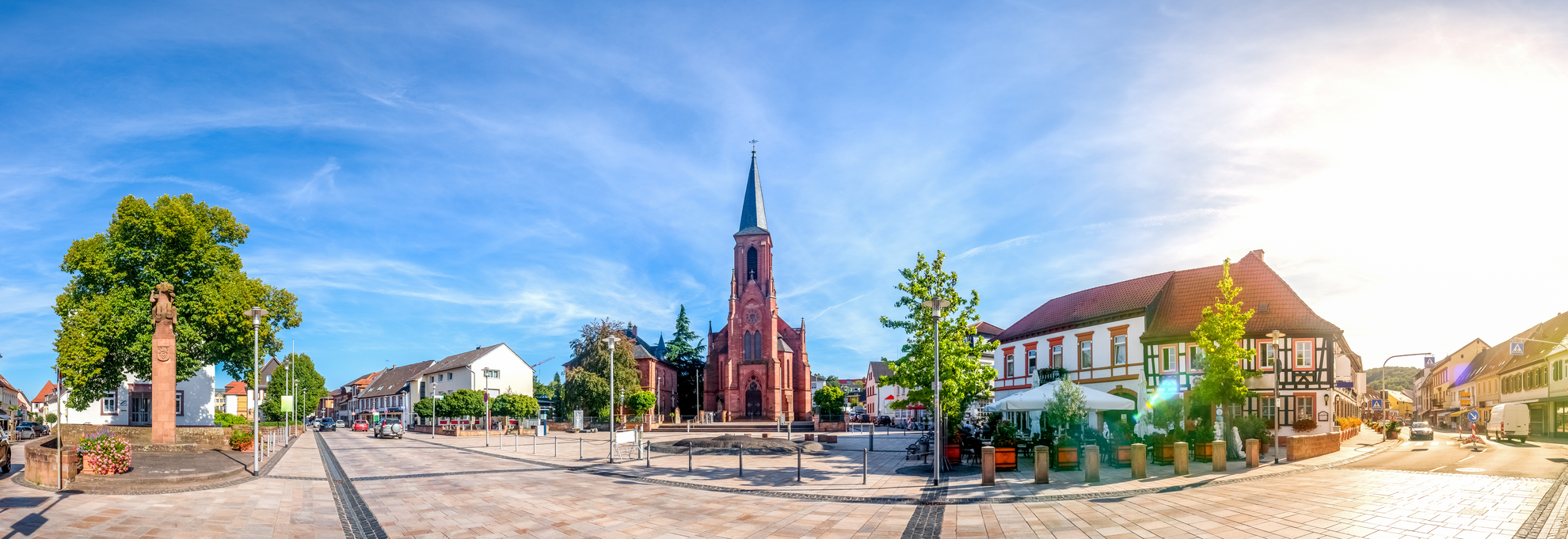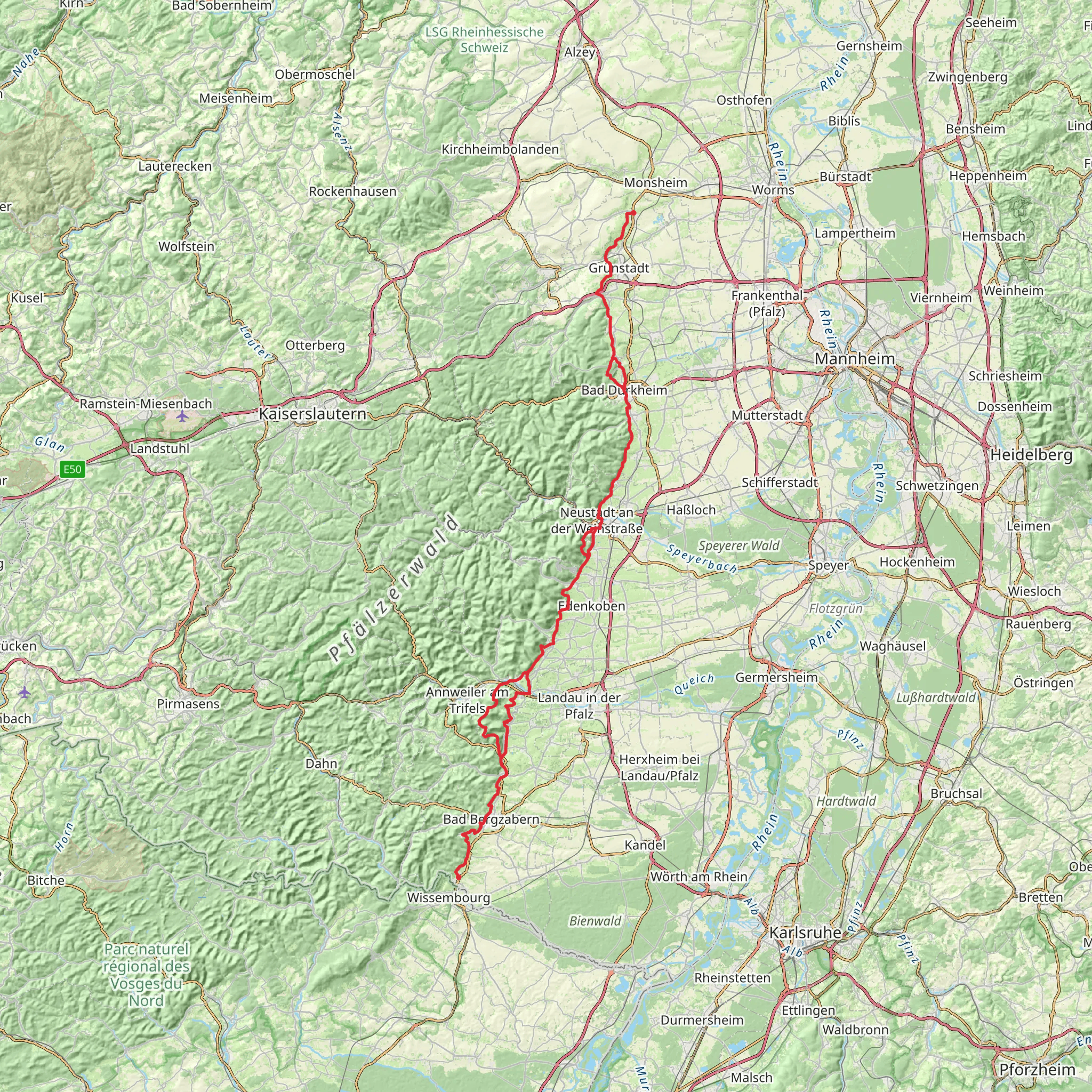Download
Preview
Add to list
More
96.4 km
~6 days
2286 m
Multi-Day
“Explore the Deutsche Weinstrasse, where history, culture, and viticulture intertwine along Germany's scenic wine-soaked trails.”
The Deutsche Weinstrasse, or German Wine Route, is a captivating trail that meanders through the heart of Germany's wine country, offering hikers a unique blend of natural beauty, cultural experiences, and historical depth. Stretching approximately 96 kilometers (about 60 miles) with an elevation gain of around 2200 meters (approximately 7200 feet), this point-to-point trail begins near the region of Leiningerland and takes you through the picturesque landscapes of the Palatinate wine region.
Getting to the Trailhead
To reach the starting point of the Deutsche Weinstrasse, hikers can either drive or use public transportation. If driving, the trailhead is accessible via the A6 motorway, exiting towards Grünstadt and following the signs to Leiningerland. For those preferring public transport, regional trains and buses serve the area, with the nearest significant train station being in Neustadt an der Weinstraße. From there, local buses can take you closer to the trailhead.
Navigating the Trail
As you embark on your journey, it's advisable to use a reliable navigation tool like HiiKER to keep track of your progress and ensure you're following the correct path. The trail is well-marked, but having a digital map can be invaluable, especially at trail intersections or during less clear sections.
Landmarks and Scenery
The Deutsche Weinstrasse takes you through a tapestry of vineyards, quaint villages, and rolling hills. Early on, you'll pass by the impressive Hambach Castle, a symbol of democracy and freedom movements in Germany, which is perched atop the Haardt Mountains. This castle is not only a significant historical site but also provides stunning views of the Rhine Valley.
As you continue, you'll encounter the charming town of Deidesheim, known for its wine culture and historic architecture. Here, the trail offers a mix of cultural immersion and natural splendor, with opportunities to taste local wines and explore traditional German architecture.
Flora and Fauna
The trail is alive with biodiversity, featuring a variety of flora and fauna. The vineyards themselves are home to a unique ecosystem, and depending on the season, you may see a range of wildflowers and hear the songs of local bird species. The surrounding forests and meadows also provide a habitat for deer, foxes, and numerous bird species, adding to the richness of the experience.
Historical Significance
The Deutsche Weinstrasse is steeped in history, not only for its viticulture but also for its role in the region's development. Established in 1935, it was Germany's first tourist wine route. The trail passes through areas that have been cultivating wine for centuries, and many of the towns along the route have historical buildings and monuments dating back to the Middle Ages, offering a glimpse into the past.
Preparing for the Hike
Given the trail's medium difficulty rating, it's suitable for hikers with a moderate level of experience. The elevation gain is gradual, but be prepared for some steeper sections. It's recommended to wear sturdy hiking boots and carry sufficient water, especially during the warmer months when the sun can be intense. Also, consider packing a picnic or planning for meals in the villages along the route to enjoy the local cuisine.
Conclusion
The Deutsche Weinstrasse is a trail that offers more than just a physical challenge; it's a journey through the heart of German culture, history, and natural beauty. Whether you're a wine enthusiast, a history buff, or simply someone who appreciates the great outdoors, this trail promises an enriching and memorable experience.
Comments and Reviews
User comments, reviews and discussions about the Deutsche Weinstrasse, Germany.
4.75
average rating out of 5
12 rating(s)

